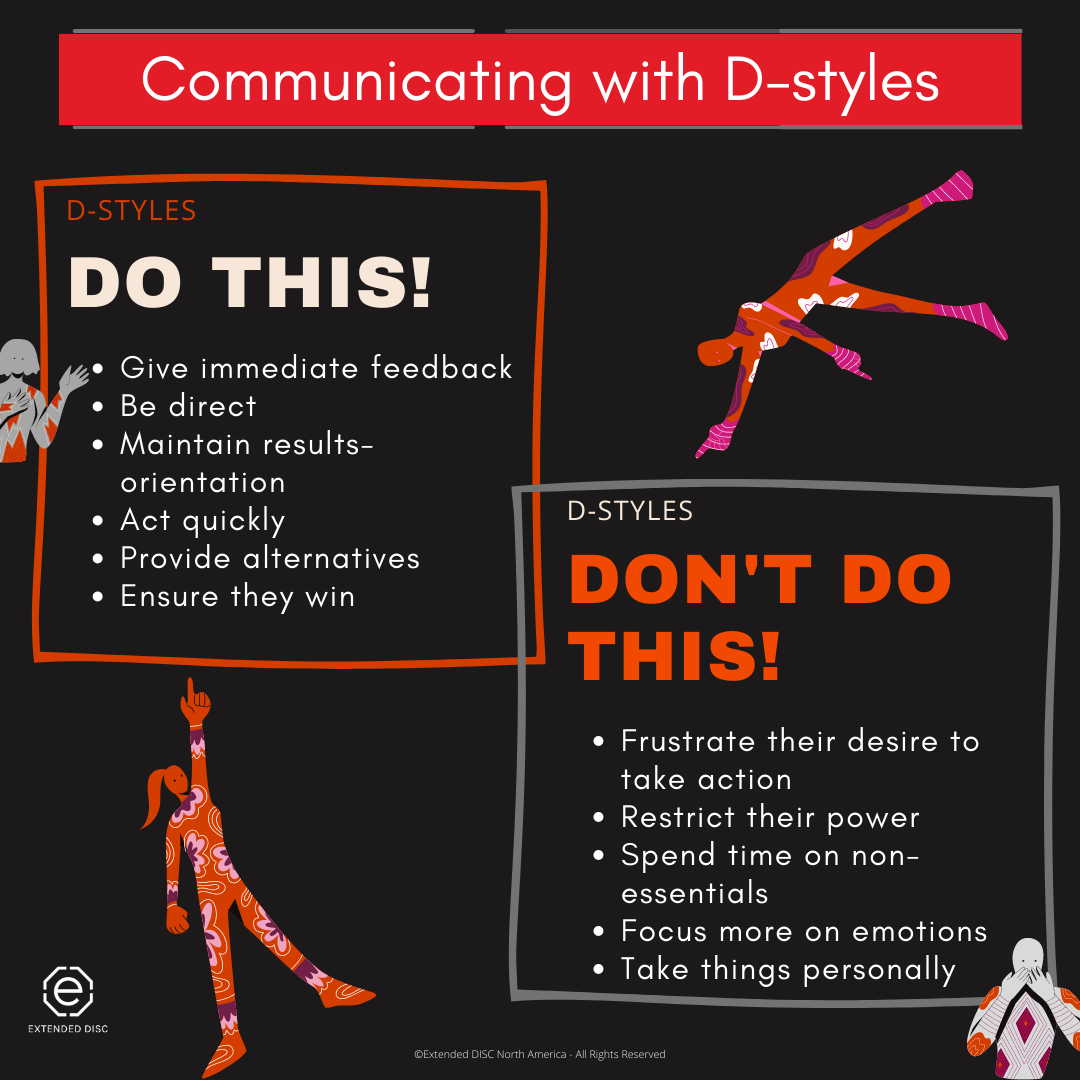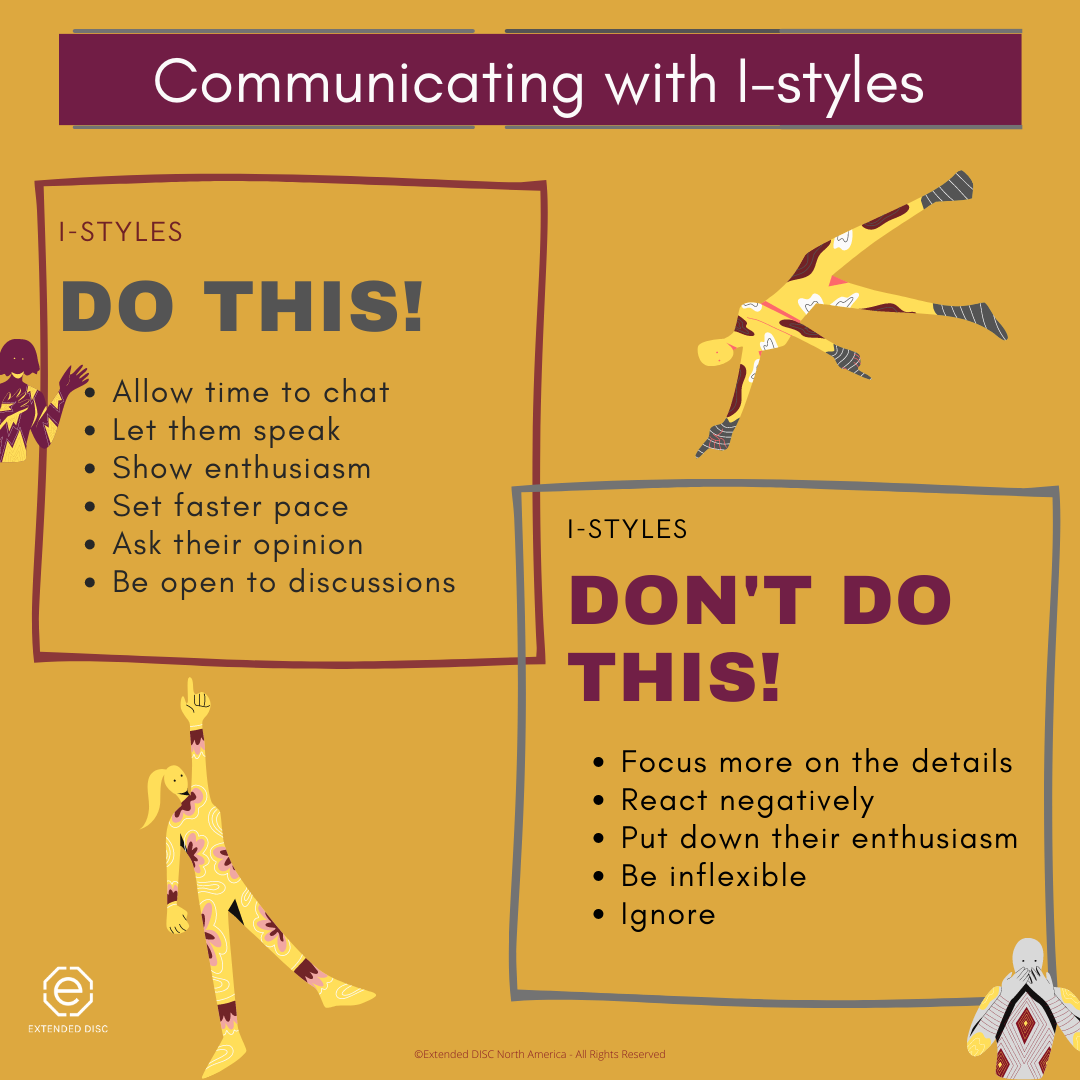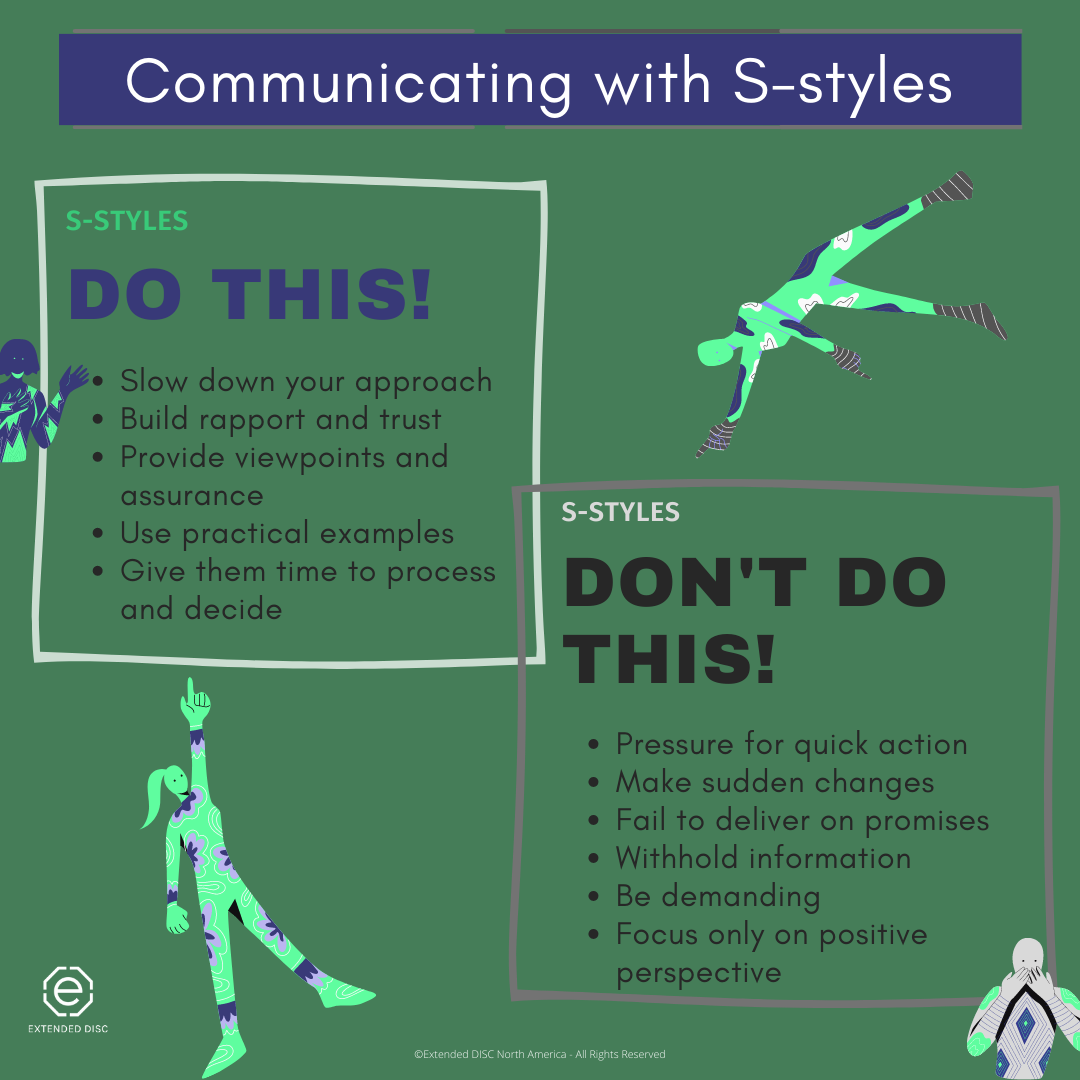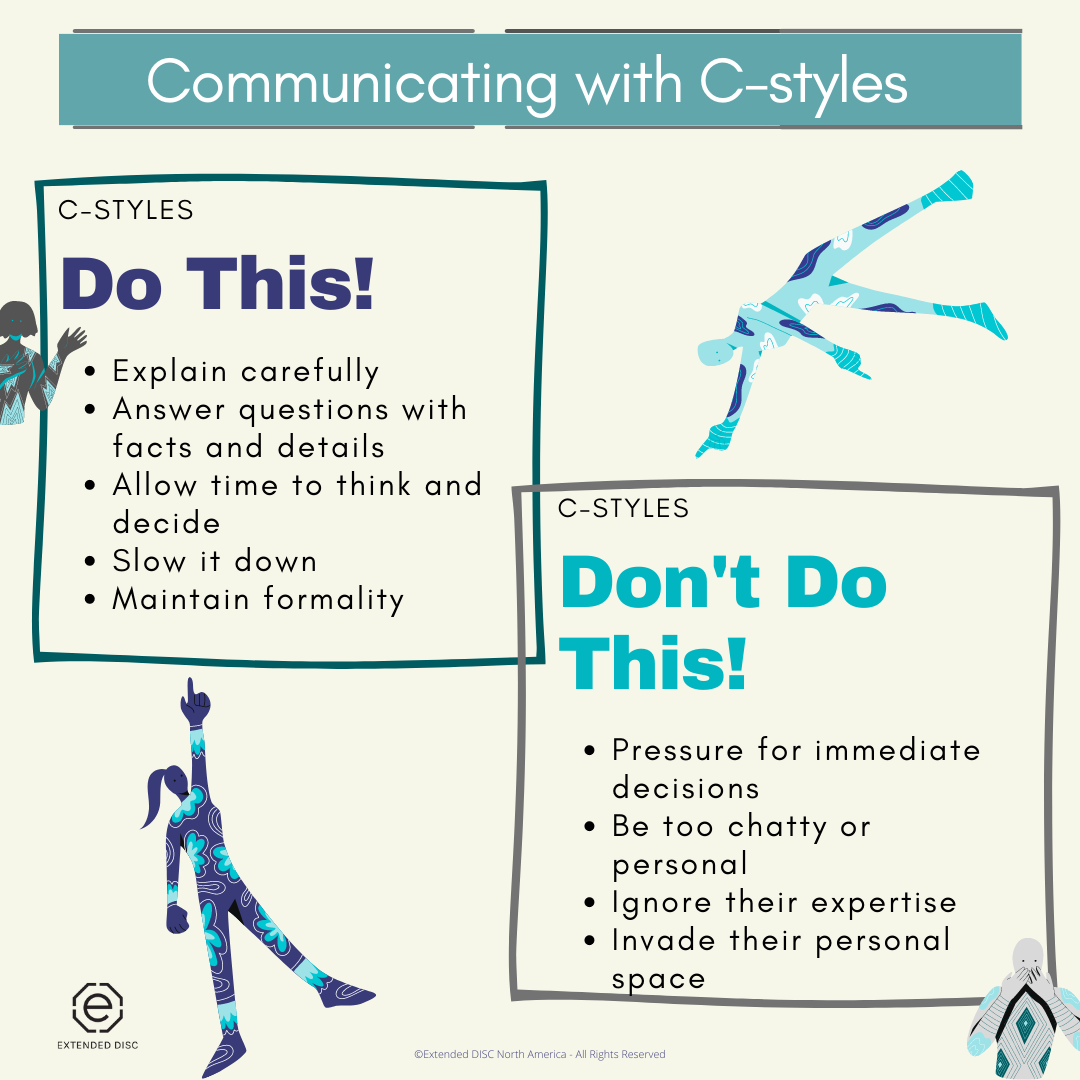Wouldn’t it be nice if people came with a set of instructions on how best to communicate with them? Have you ever been asked how you prefer to be communicated with?
Many people simply do not have tools on how to effectively communicate with others. What usually ends up happening is you communicate with others the way in which you want to be communicated with. It works well with some people and backfires with others. You have a natural communication style, but so do others. We overlook the fact they're not always the same.
Well, there is no magic formula; but there is an easy-to-understand and apply methodology called DISC.
DISC provides us with a strategic roadmap to help you increase your self-awareness, situational & other awareness, and create a road map to bridge any gaps.
Which of these communication examples resonates with you?
- Give me the facts quickly. Let’s decide and move on.
- Let’s make small talk and share a laugh.
- Be sincere and genuine. Let’s work together.
- Give me all the details and let me pour over them alone.
Which one rubs you the wrong way? Can you picture someone you know who communicates like this?
Congratulations! If you are able to answer the questions above, you can understand and apply DISC. There’s no right or wrong with DISC. Additionally, there is no better or worse.
Oftentimes, you identify with all the examples depending on the situation. Again, bringing up the idea of awareness. You have all four DISC styles. Extended DISC measures your energy. Which styles are your natural behavioral reaction mode and which ones take more energy. Let’s take a closer look.
1. Give me the facts quickly. Let’s decide and move on.
 This communication preference describes the D-style. D-styles act and decide fast. They focus on the task at hand and seek out results. They are often seen as demanding and impatient. D-styles see themselves as achieving great results efficiently.
This communication preference describes the D-style. D-styles act and decide fast. They focus on the task at hand and seek out results. They are often seen as demanding and impatient. D-styles see themselves as achieving great results efficiently.- Does this communication style resonate with you? If yes, you prefer your communication to be factual and fast-paced. You don’t need all the gritty details. Just enough and you are ready to spring into action.
- Does this communication style rub you the wrong way? If yes, then explore why? Is it the focus on the business and lack of warmth or personability? Or is it the fast-paced nature of the individual and never any room to pause and breathe? How is this communication style different from your own?
- Can you picture someone you know who communicates like this? If yes, how do they compliment you? What if you adjusted your communication style to fit theirs? What do you think would happen? Give it a try!
2. Let’s make small talk and share a laugh.

This communication preference describes an I-style. I-styles enjoy talking and connecting with others. They tend to focus on the positive and inspire others to do the same. Details and negativity are not their preference. Others may see them as too talkative or unrealistic. I-styles see themselves as inspirational and get more done through connecting with others.
- Does this communication style resonate with you? If yes, you feel energized when connecting with others. You will probably pick up the phone before sending an email. You focus on making others feel good because that makes you feel good.
- Does this communication style rub you the wrong way? If yes, then explore why? Do you find them to be too chatty? Do they seem unorganized? Do you feel they are unrealistic because they avoid unpleasant topics? How is this communication style different from your own?
- Can you picture someone you know who communicates like this? If yes, how have you benefited from them? What do you think would happen if you adjusted your style to match theirs? Try it
What about the communication styles that show up being quieter?
3. Be sincere and genuine. Let’s work together.
 This describes how the S-styles prefer to communicate. They prefer to listen over speak. They seek out sincerity and authenticity in others. They need trust in order to communicate and prefer one-on-one situations. Others may see them as resistant to change. They see themselves as ensuring the change is beneficial for everyone and not just change for change's sake.
This describes how the S-styles prefer to communicate. They prefer to listen over speak. They seek out sincerity and authenticity in others. They need trust in order to communicate and prefer one-on-one situations. Others may see them as resistant to change. They see themselves as ensuring the change is beneficial for everyone and not just change for change's sake.- Does this communication style resonate with you? If yes, you prefer to talk about topics you’ve mastered because you have more confidence in known facts. You seek to understand the perspective of others. You prefer to make collaborative decisions that benefit everyone.
- Does this communication style rub you the wrong way? If yes, then explore why? Do you perceive they lack confidence? Do you wish they would express their opinions more? How is this communication style different from your own?
- Can you picture someone you know who communicates like this? If yes, how do they compliment you? How do you draw out their opinions? How else could you adjust? Share your ideas.
4. Give me all the details and let me pour over them alone.
 C-styles love the details and prefer to review them alone. They also prefer everything in writing. They are perfectionists and can be critical. Others may see them as cold and distant. They see themselves as being quiet and reserved.
C-styles love the details and prefer to review them alone. They also prefer everything in writing. They are perfectionists and can be critical. Others may see them as cold and distant. They see themselves as being quiet and reserved.
- Does this communication style resonate with you? If yes, you love the nitty-gritty details. You prefer to work alone. You tend not to express emotions.
- Does this communication style rub you the wrong way? If yes, then explore why? Do you perceive them to be cold and distant? Do you find it difficult to determine what they are thinking/feeling? How is this communication style different from your own?
- Can you picture someone you know who communicates like this? If yes, what benefits do they bring you? What do you think would happen if you adjusted your style to match theirs? Try it!
Congratulations!
If you have been answering these questions you have begun to create your roadmap to communications! It can be just that easy!
- First, take note of your preferred communication style.
- Next, be aware of the other person/situation.
- What do they need from you at that moment? How could you meet that need?
- Try it out and see if it works.
Remember, you can always be the trendsetter who starts asking others how they prefer to be communicated with. Try it with next person you talk with. People appreciate the effort!
